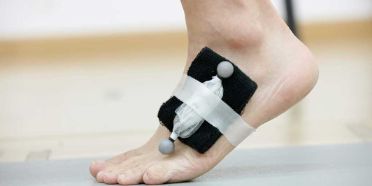The CurePPaC Study
Despite widespread use in clinical practice, evidence-based data on non-surgical treatment strategies is sparse. The project evaluates non-surgical treatment strategies for the mentioned pathology.
Factsheet
- Lead school School of Health Professions
- Institute Physiotherapy
- Research unit Fussbiomechanik und Technologie
- Funding organisation SNSF
- Duration 01.04.2013 - 24.01.2017
- Project management Prof. Dr. Heiner Baur
- Head of project Prof. Dr. Heiner Baur
- Partner Universitätsklinik für Orthopädische Chirurgie und Traumatologie, Inselspital Bern
- Keywords eccentrics, foot orthoses, non-surgical treatment, Pes Planovalgus
Situation
Analysis of non-surgical treatment strategies to cure Pes Planovalgus associated complaints.
Course of action
Pes planovalgus is often accompanied by a dysfunction of the posterior tibial tendon. Early stages are thought to be treated with non-surgical therapy measures. These mesures are to be analysed.
Result
Patient recruiting did not work despite the involvement of 5 orthopedic centers. The work-group did then focus on the development of valid diagnostics of dynamic foot function. Assessments of simple, yet clinically relevant measures like navicular drop/drift and foot progression angle and their changes due to external factors could be developed.
Looking ahead
Despite the absence of clinical data on pes planovalgus patients, simple and clinically relevant tools for dynamic evaluation of foot function were developed and their quality criteria were assessed.

